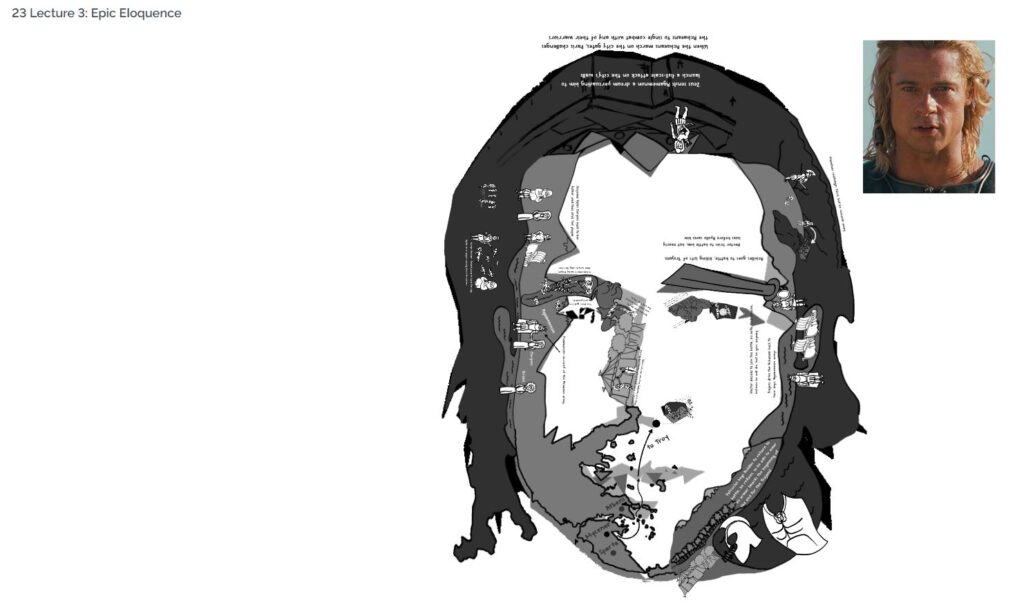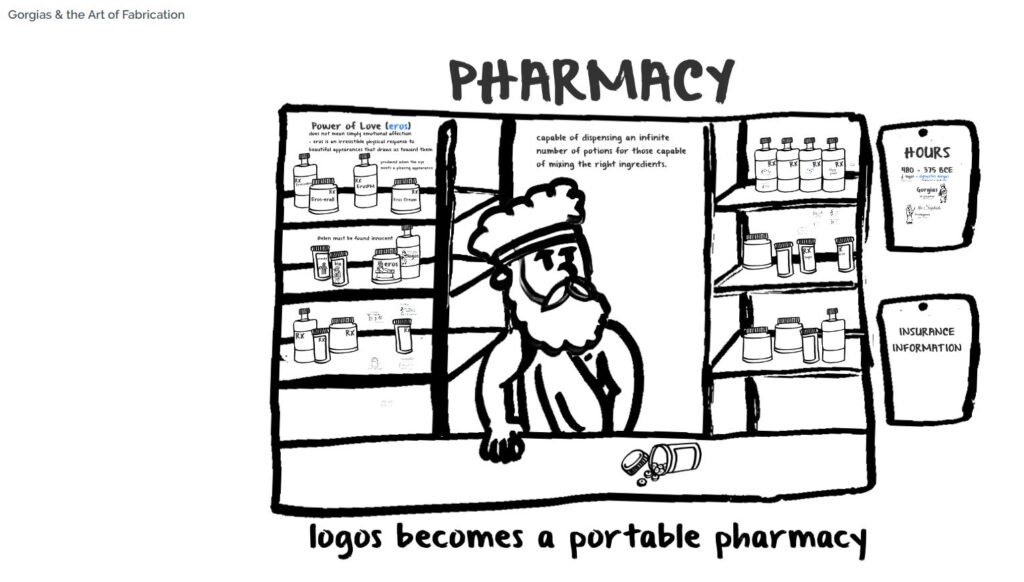What emotion does the course title “Rhetoric and Western Thought” invoke in you? For most at Texas A&M, it was one of the more feared courses in the Department of Communication and Journalism. For Professor David Tarvin, it was one of his favorite courses when he was a student.
Imagine his confusion when he heard one of his students crying outside of his office, upset over not understanding what David thought was fascinating material. She said, “It’s just Greek philosophy. It goes in one ear, and out the other.” Even though he wasn’t currently teaching the course, he had such fond memories of it that he decided to map out the Greek story that she was learning using a process called graphic facilitation. In basic terms, it means using pictures to help with learning. This method, one that is used in Prezi, helped her understand and appreciate the course in a more comprehensive way.
After that, David, who is in his ninth year of teaching at Texas A&M, requested to teach that course, in addition to his inner cultural communication and public speaking courses.

David’s teaching approach
Remember childhood books with beautiful illustrations? David uses a similar approach to teaching, graphic facilitation, to teach his courses and make them more accessible to students. He has struggled with ADHD and dyslexia so he understands that hand drawing all of his lectures and using Prezi as a capture tool helps his students engage with the material that “lives a little bit more than with other software.”
“Using Prezi for my lectures makes the classroom experience more fun for the students, and for myself,” David said.
Because of how David organizes these concepts in his mind, he likes using Prezi because it allows him to envision his presentations based on how he can zoom in and out of topics. When he was writing his dissertation, he used Prezi to visualize his structure.
“If I had an idea that could be more developed, I would ‘zoom’ into it or ‘zoom’ out of it if it related to something broader,” David said. “It really helped me organize my brain for writing. I think in Prezi even when I’m not using Prezi.”
His punny images in the Prezi presentations that he shares bring modern-day laughter into a class about ancient comedy. For one of his lectures, David tells the story of Aristophanes, who was the first comedian, and showcases his play, Birds, where he uses each letter as a different slide and zooms out to a comedy club.

“In this lecture, we start talking about the rhetoric of humor, and how we can use humor to persuade, and using Prezi just shows that we can communicate language in an interesting way,” David said.
“And my favorite thing about Prezi is my zoom-out moments where it reveals my theme of the day.”
In another lecture, David shared the story of the Iliad, where his presentation zooms out to Brad Pitt’s face, who played Achilles in Troy. Using this approach helps the modern-day student feel more connected with an ancient text.

The virtual classroom
With the shift to virtual teaching, David was prepared with Prezi Video. He really loves that he can upload Prezi presentations and PowerPoint presentations and they appear right next to his face.
“I like having it next to me because I find students are more engaged if they have eyeballs to look at, rather than a PowerPoint presentation, and also that I can point to content,” David said. “I also like the feature of zooming into the video and then zooming back out to me as a speaker. It’s just so easy and seamless.”
Where it started
When David worked at Louisiana State University, his adviser Dr. Nathan Crick was focusing his research on Marshall McLuhan’s philosophy of the medium as the message, meaning it’s not just the message that’s important, but equally as important is the way it’s delivered.
“And so when Prezi was first initiating, he realized this new medium could be a new message to get to students, which is how I got into it,” David said.

How David evangelizes Prezi
That same student who came into David’s office years ago is another Prezi success story. During her time at Texas A&M, she took more of David’s classes and had an even bigger interest in graphic facilitation.
Now, she’s a language, arts, and theater high school teacher in Dallas, where she draws out her lectures and then uses Prezi to present them to students, just like David had taught her. Prezi helped turn those tears of frustration into an engaging educational experience — not only in her past but also in her future.
